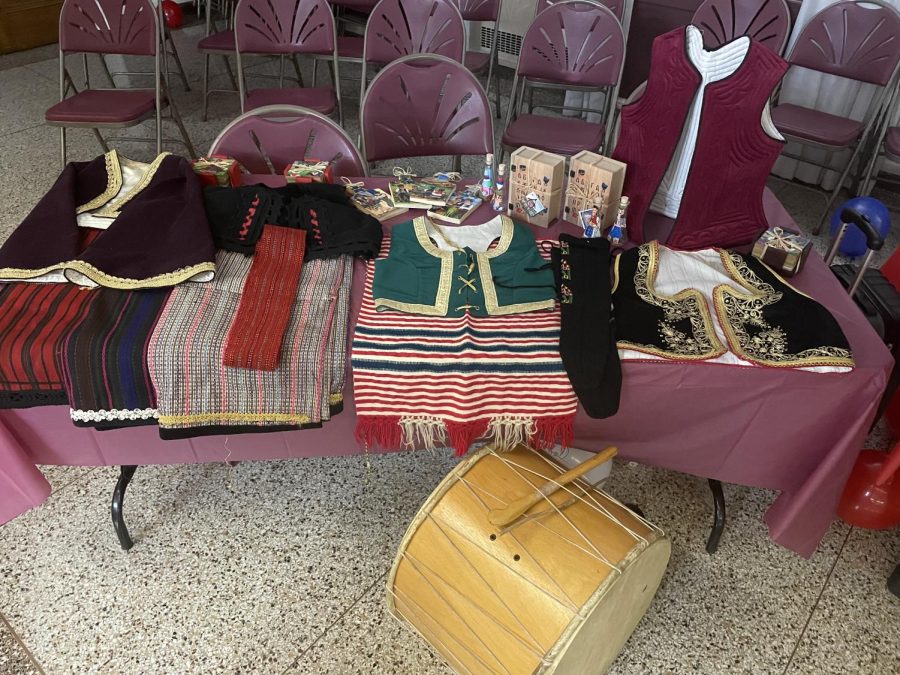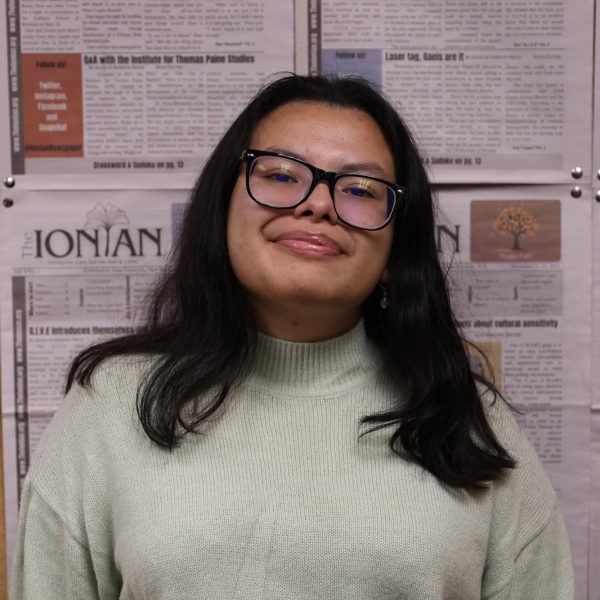Iona celebrates Serbian heritage, culture with festival
Photocredit Jocelyn Arroyo-Ariza
At Iona’s Serbian Day Festival students learned about Serbian culture firsthand.
January 27, 2023
Iona’s International Club hosted Serbian Day Festival: A Cultural Feast in Burke Lounge on Jan. 20. The club not only represents more than 70 international students, but the international community as a whole. Walking into Burke Lounge, guests tread along a red carpet that led to the event. Many members of the Serbian community in the Westchester area were invited to take part,with some bringing their entire families.
Exhibits with informative poster boards surrounded Burke with each giving facts about Serbian geography, culture and history. Serbia is a small, landlocked country located at the crossroads of Central and Southeastern Europe. The country follows a parliamentary democracy system. The official currency is the Serbian dinar (RSD). The majority of the population is Orthodox Christian at around 84.5%. Serbian cuisine is quite diverse as it has a mixture of Greek, Bulgarian, Turkish and Hungarian influences. An interesting fact about Serbia is that it is the third most competitive country when it comes to raspberries, making Serbia one of the world’s superpowers in the raspberry industry. Serbians celebrate many holidays during the month of January such Orthodox Christmas, Serbian New Year and St. Sava’s Day. Questions were more than welcome as members of the Serbian community were glad to talk about their heritage. There were also activities to do with friends such as learning how to write your name in Serbian.
After allotting time for participants to look around, the Serbian Day Festival formally began. This is the first time the festival was held at Iona. Lazar Paroski, the president of the international club, gave the opening remarks thanking faculty, choreographers and guests for helping organize the event. Paroski also emphasized the importance of having events like Serbian Day Festival at Iona.
“It is important to show different perspectives and views, to see a world we do not know,” Paroski said. “We can learn from each other preparing us for the future.”
Later, the traditional breaking of the bread, Cesnica was performed. Guests were treated to traditional Serbian cuisine. Appetizers were placed at each table for students to try such as sausages and cheese. Pudding, bread and cookies were also served. Towards the middle of the festival, videos were shown to highlight Serbian contributions, particularly those of Serbian Americans, with most focusing on WWII and the Cold War.
Two groups of dancers performed wearing traditional Serbian folk costumes. Each region has distinctive clothing, often revealing where one is from. Jelek is a waistcoat made from wool or velvet. Opanci are traditional peasant shoes that have a horn like ending. One of the groups consisted of children and teenagers. Parents were ecstatic and proud of their children celebrating their heritage. Cheering and clapping, the crowd was delighted to see such young talented dancers.
After alternating between the groups, Serbian Day Festival culminated with students joining the dancers in performing Kolo, a traditional circle dance. Gaels held hands as they learned some dance moves. It was a positive way to end the night as the room celebrated the beauty of Serbian culture.









